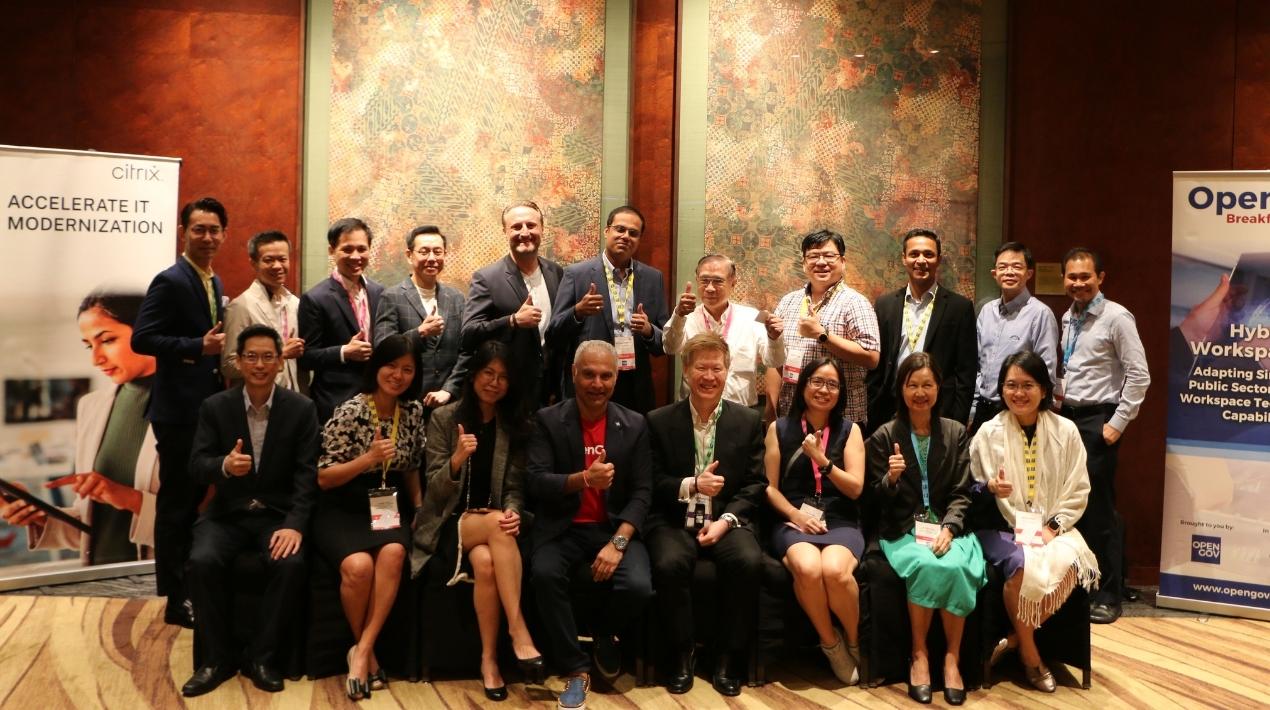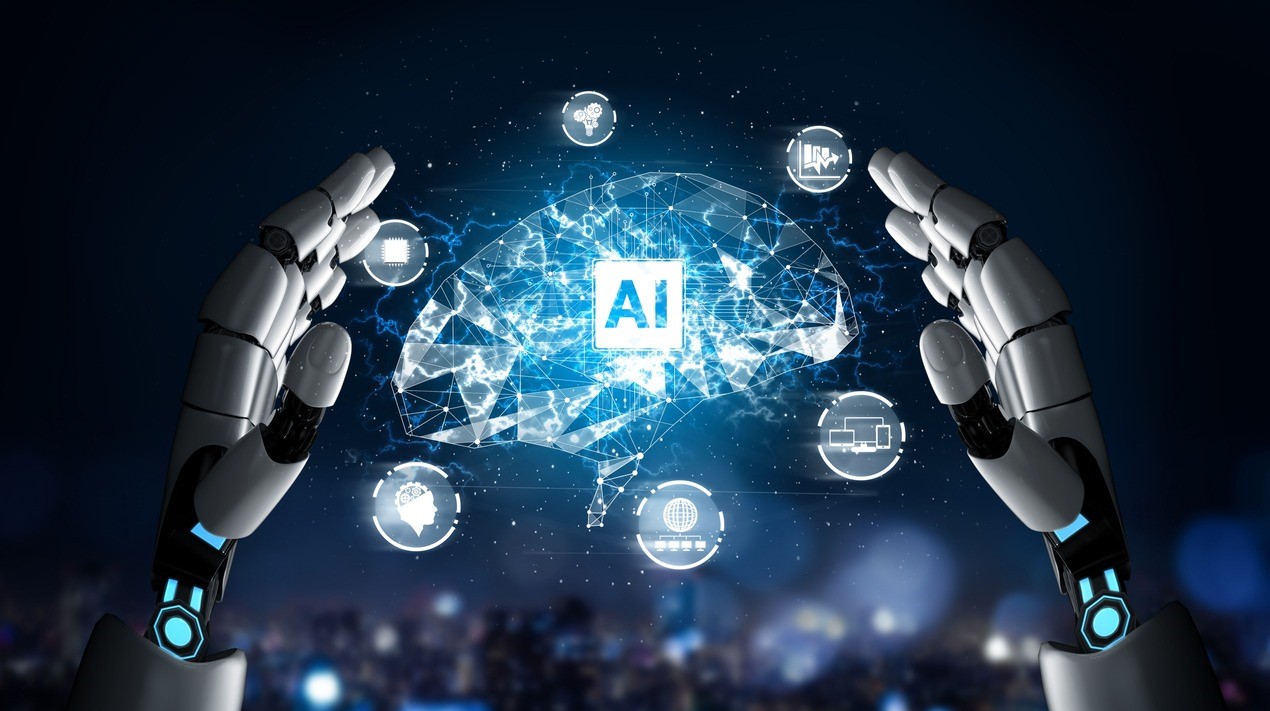
As more people return to work, both the public and private sectors encourage a flexible work arrangement that promotes collaboration, social connection and concern for employees’ well-being.
Without question, remote working helped government staff to continue to serve and be productive while being safe during the pandemic. However, it made it more difficult to create and maintain ties among colleagues, coordinate within teams and build organisational culture.
In the post-pandemic era, government agencies are encouraged to create a new working experience that blends the benefits of remote and onsite work. Agencies should strive to improve organisational effectiveness by implementing more responsive ways of collaboration.
With this, organisations are seeking solutions to ensure worker access and productivity while putting a greater emphasis on IT modernisation for rapid response, resilience and agility. This expanded digital surface makes cybersecurity a key component of all operations.
With platforms, systems and data being accessed from various locations on diverse devices, security is of the utmost significance. In a VUCA environment, hybrid workspaces using cloud allow teams to operate effectively in various contexts and on wide-ranging equipment.
Software applications, data storage and retrieval as well as communication between officials and citizens can be safely deployed on government commercial cloud, allowing agencies to be highly responsive to public needs while ensuring security.
The OpenGov Breakfast Insight on 7 September 2022 held at the Mandarin Oriental Singapore offered the latest information on the benefits of a cloud-based model to enjoy cost savings and operational efficiencies for Singapore’s public sector.
Technological Security in a Hybrid Workplace

Kicking off the session, Mohit Sagar, CEO & Editor-in-Chief, acknowledges that in a post-pandemic society, hybrid workplaces will become the new standard.
With the gradual easing of restrictions, a fusion of work environments that support a combination of at-home and in-office settings have emerged. This means that while setting up such models, firms must consider a variety of aspects, including productivity, communication and – most importantly – security.
“Security is of the utmost consequence, especially when it comes to access to platforms, systems and data,” Mohit believes firmly. “Preventing cyberattacks from outside or inside the organisation is vital as bad cyber actors are growing more sophisticated in their approach and complex in their techniques.”
Security needs must always be a top priority for businesses, and with the growth of remote and hybrid workspaces, difficulties and complications will only get more complicated as businesses try to keep up. With a greater focus on IT modernisation and security, companies are looking for ways to make sure their employees have access and can do their jobs well.
This situation is the same for government agencies, where cybersecurity is just as important for citizens as it is for business customers. Officers have access to sensitive government information and confidential citizen data from a range of internal and external networks and devices on the government-commercial cloud.
By addressing the operational issues posed by complicated, dispersed and siloed infrastructure, appropriate IT modernisation produces flexible solutions with strong security and efficiency. As a result, officials may work efficiently and concentrate on completing their strategic deliverables without wasting time or resources on dealing with IT or system inefficiencies.
Organisations are rapidly developing new cloud applications and transferring data and existing applications to the cloud as they transition to hybrid working paradigms.
“By developing a solid hybrid cloud adoption strategy and plan will benefit the workforce and the general public,” Mohit is convinced.
To guarantee their assets and end users remain productive and secure, IT organisations must go beyond appliance-based security solutions as more employees work remotely and apps continue to migrate to the cloud.
Mohit emphasises that establishing a safe government-commercial cloud policy will better serve the public by utilising the capabilities to increase public sector resilience and stimulate innovation.
Enable Your Hybrid Workforce in Government, Education and Healthcare

Digital operations have become the method of choice for many citizens, according to Gregor Preidl, Vice President, Customer Success, APJ, Citrix.
“The days of travelling to a government office and speaking with a person in person directly are long gone,” says Gregor. “Government institutions must cater to the distinct digital demands of its citizens as part of the ongoing evolution of the public sector in the post-pandemic age.”
Online engagement and consumerisation have now exceeded face-to-face citizen service in government. While these trends present government organisations with opportunities, they make it necessary for both citizens and government workers to have access to advanced digital technologies. This has resulted in a wide range of issues that every governmental entity must deal with.
The prevailing conditions, institutional obstacles and IT challenges, Gregor agrees, are all difficult. The push to create novel approaches and goods, as well as to shorten the time it takes for government services to reach the market, is a result of the market environment. Another constant issue is a lack of funding – thus finding new revenue sources is an ongoing exercise.
Institutional difficulties exist as well, such as attracting and maintaining the best candidates. Promoting customer and employee retention is essential and the new working practices as well.
Gregor believes a novel approach to crucial government services is the need of the hour. Utilising a digital platform that offers excellent experiences for citizens and government employees is crucial.
“IT has numerous challenges such as technology and app rationalisation,” says Gregor. “Cybersecurity dangers are persistent. An organisation’s infrastructure must support web apps, SaaS and the cloud. And the demand for readily available regulatory compliance data.”
Gregor opines that an organisation’s challenges likely fall into four categories: market forces, employees and citizens, IT demands and applications. Organisations must deal with consumerisation, bringing new goods and services to market, satisfying competitive demands and regulatory compliance under the heading of market forces. They must additionally evaluate the technology that has been phased out or may need to be.
Employee expectations, including remote work, usage of any device over any network and support for various work styles, must be managed. In terms of applications, this entails moving to the cloud, using SaaS and modernising apps. Moreover, there are IT requirements for things like enhancing business continuity, putting in place a comprehensive cybersecurity defence and making sure compliance information is accessible.
“Ultimately, improving the employee experience will increase employee engagement, which is the key to everything. In the end, providing excellent employee experiences is what allows you to provide excellent customer service,” Gregor believes.
He offers a few choices that a company, particularly one in the public sector, must think about while evaluating its surroundings and digital IT requirements:
- Continue using existing infrastructure and don’t move to new technology;
- Implement a VPN-based remote access solution and leverage endpoint management to “secure” the devices/solution;
- Build a digital workplace entirely based on cloud-native technologies (e.g. Office 365, Dropbox, Salesforce);
- Build a digital workplace entirely based on technologies/services from a single platform/vendor, such as Microsoft or Google, to get management simplicity, cost, and scale benefits; and
- Roll back the technologies enabling remote work and expect employees to return to the office 100%.
Governmental organisations that can provide a uniform, unified, secure and streamlined work experience across all work channels, on any device, from any location, will succeed.
“You can achieve this by putting in place a digital workspace platform based on Citrix DaaS,” Gregor concludes.
In Conversation: Modernisation of data and migration to hybrid cloud to foster public-sector innovation

According to Kevin Tay Chong Keg, Group Chief Information Officer, SingHealth, to be sustainable, daily technology services must always be updated. Thus, the public sector should continually modernise to improve its efficiency, agility, security and privacy protection.
A wide number of industries, including ICT, AI, ML and robotics, among others, are experiencing significant technical advancements. It is anticipated that these discoveries will have a profoundly disruptive impact and fundamentally alter how societies operate.
Kevin emphasised the importance of cloud adoption, “Enterprises employ cloud adoption as a tactic to increase the scalability of Internet-based database capabilities while lowering cost and risk. To accomplish this, companies use cloud computing, which involves storing, managing and processing important data on remote servers.”
Along with this, Kevin stresses the importance of the cloud policy, which is frequently developed to safeguard the confidentiality and integrity of company-owned data.
He added that mobile app development now has the unique opportunity to reach a wide range of potential customers due to the rise in the number of individuals using smartphones and tablets to access the Internet.
Therefore, it is necessary to continuously update the mobile application management that enables the deployment of comprehensive, fine-grained security policies, visibility, and management controls for specific apps.
These technological accelerations promise substantial social and economic benefits, improved production, and higher efficiency across a variety of sectors.
Likewise, as more businesses utilise cloud infrastructure to protect their essential data, there is a growing concern about data privacy and security. As a result, organisations should deploy elaborate cloud security procedures to establish a strong data encryption and protection posture.
Gregor suggests that an organisation should not automatically trust anything inside or outside of its perimeters, according to the zero-trust security principle, which holds that all connections to an organisation’s systems must first be verified.
Speeding up technological progress through time may portend a faster and more significant change in the future, which may or may not be followed by equally significant social and cultural change.
Moreover, according to Kevin, one of the innovations that should be considered, to ensure the efficiency of business continuity and disaster recovery while keeping costs under control, is online delivery.
“Our patients are our top priority; thus, we created the Medicine Delivery Service, an online consultation and medication delivery service that will offer the public’s essential medications at the convenience of home residents,” Kevin explains.
Businesses need solutions that can expand in terms of speed, accuracy, and convenience while also being more affordable as they progressively shift their operations to the cloud.
Companies may now more effectively link their mobile workers, manage their productivity tools, and lower the total cost of ownership of their IT investments thanks to such a powerful capability at their disposal.
IT needs to react to changing situations and governmental organisations now are accelerating what used to be multiyear journeys. “It’s important to speed the process of modernising IT. In addition, businesses should make use of the tools offered by cloud service providers to encrypt data, manage access rights, and put in place cloud rules that deal with the problem of deployments that are not adequately protected.
Companies can utilise cloud management solutions that gather and analyse logs and build audit trails to discover and remedy policy violations to make sure these policies are followed.
Closing Remarks
There is an urgent need to create a digital platform that facilitates secure distributed work and provides the optimum user experience. Therefore, it’s crucial to strike a balance between security, legal compliance and employee expectations to empower workers who wish to continue using remote working arrangements.
It is necessary to make sure that consumers may access information via a variety of devices and from any location. Boosting individual productivity by equipping users with the appropriate technology that is simple to use, intuitive and allows them to complete all their essential tasks.
“At the end of the day, it’s all about the experience of our clients, citizens, employees, and security automation and I hope that the next generation will consider the technological challenges to be words of the past and concentrate today on how we might offer solutions,” says Gregor.
Cloud technology is a crucial factor in this, as it enables the delivery of meaningful, tailored experiences faster and cheaper. Citrix is a cloud-based platform for managing and deploying Citrix products, desktops, and applications to end users, in which the data is stored in the data centre.
Mohit is firmly convinced that the traditional workforce is being quickly replaced by hybrid labour as the effects of the pandemic become more evident. In light of this, building a secure hybrid workforce has gained importance.
“Partnerships play a vital role in cloud adoption as they can offer the knowledge required to market, sell, create, integrate, customise, deploy, and maintain new applications in any cloud architecture. For businesses looking to grow quickly, partnerships are the way to go,” Mohit concludes.
















